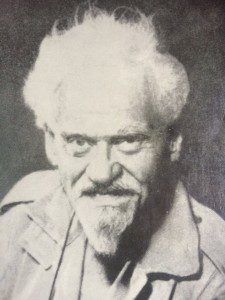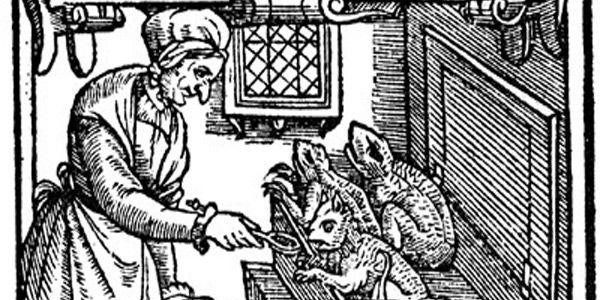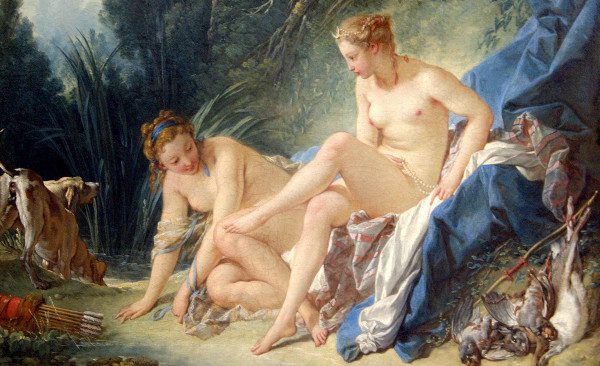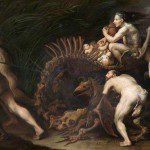Fakelore is a negative little word often applied to ideas within the Pagan Community that are generally unsupported by historical fact. Often mentioned examples of “fakelore”include: the Burning Times, a goddess-centered matriarchal prehistory, and Wicca as an unbroken chain stretching back centuries. For several decades these ideas were freely accepted and passed along in books and covens as holy writ. Starting in the 1990’s these ideas were re-evaluated, and often found wanting. However unlike other forms of “fakelore” those stories weren’t created to pass as genuinely traditional, they were accepted history in many disciplines for decades. No one sharing these ideas in Pagan circles was intentionally trying to deceive anybody.
Fakelore: imitation folklore (as tales or songs) created to pass as genuinely traditional
from the Merriam-Webster Dictionary
However, I think dismissing them as fakelore does a huge disservice to the truths found in these stories. What they are is modern mythology, and mythology is not “fake.” Merriam-Webster offers this definition of myth:
a usually traditional story of ostensibly historical events that serves to unfold part of the world view of a people or explain a practice, belief, or natural phenomenon
All of the examples cited above as fakelore fit this definition. While those examples may not be true in a historical sense, they all illustrate greater truths. They are a part of Modern Paganism’s mythology and continue to have value.
 The Myth: In 1939 Englishman Gerald Gardner was initiated into a long-standing Witch-cult near New Forest England in the house of socialite “Old” Dorothy Clutterbuck. The Witch-religion Gardner was initiated into spanned centuries, and can be seen as an unbroken chain stretching from pagan antiquity to the modern day.
The Myth: In 1939 Englishman Gerald Gardner was initiated into a long-standing Witch-cult near New Forest England in the house of socialite “Old” Dorothy Clutterbuck. The Witch-religion Gardner was initiated into spanned centuries, and can be seen as an unbroken chain stretching from pagan antiquity to the modern day.
The Truth: Out of all the fakelore claims I’ll be examining over the next few weeks Gardner’s story is the most difficult to write about objectively. I’ve got lineage going back to Gardner, and I simply just love the man. It’s not an exaggeration to say that I wouldn’t be here without the “Grand Old Man of Witchcraft.” What one thinks of his initiation story says a lot about one’s feelings for Uncle Gerald.
Could Gardner have been initiated into a coven of witches in 1939? Absolutely. The New Forest area where Gardner lived at the time was absolutely crawling with occultists and others involved in less than mainstream practices. The Rosicrucian Order Crotona Fellowship, a group Gardner associated with in Christchurch (near New Forest), was full of individuals with occult-like leanings. Among its members were Cunning-folk, Co-Masons, Theosophists, and (of course) Rosicrucians. Not a part of that particular group but living in the same vicinity was an initiate of the Golden Dawn. Just about everything that would have been needed to start a Witch-religion that would look familiar to us was available to Gardner and his associates in 1939.
So was Gardner initiated into something in 1939? It’s hard to say because there’s no paper-trail (and “yes there is, I just can’t show it to you” is not an acceptable answer here). While I firmly believe he was initiated into something 1939, I have no real way to prove that. There’s a lot of speculative evidence suggesting it was possible, but, alas, no smoking gun. So like many things regarding religion it becomes a matter of faith.
There are a lot of smart people out there who think that “Gardner made it all up,” which is certainly possible. Gardner was well read and had a very serious interest in the occult, and that started long before 1939. However to say “Gardner made it all up” short-changes Gardner’s early High Priestesses, and not just Doreen Valiente. Edith Woodford-Grimes (nicknamed Dafo) is Gardner’s probable initiator and even if she didn’t initiate the man she played a role in Witchcraft’s development.
There’s also the already mentioned Valiente who wrote, re-wrote, and added to many of Gardner’s early rituals. (Just because I think Gardner was initiated into something doesn’t mean he got their Book of Shadows, he may have very well been attempting to rewrite or recreate the rituals of the New Forest Witches.) It’s also worth pointing out that Valiente believed there was a New Forest coven in Gardner’s past.
Part of the Witchcraft myth is that it’s very old and extends back to the beginning of recored human history, but that was always more of a theory than an idea set in stone:
“The witches do not know the origin of their cult. My own theory is, as I said before, that it is a Stone Age cult of the matriarchal times, when woman was the chief; at a later time man’s god became dominant, but the woman’s cult, because of the magical secrets, continued as a distinct order.” -Gardner Witchcraft Today, page 37 of the edition in my lap.
I’m of the belief that Gardner was initiated back in 1939, but the group he was initiated into was only ten to twenty years old. In this context it’s worth noting my all-time favorite Gardner quote: “Witches are consummate leg-pullers. They are taught it as part of their stock-in-trade.” Could Gardner have had his leg pulled by an initiator who hinted at a far older Witch-religion?

One part of the Gardner-Witchcraft-Revival myth that’s most certainly true is the existence of Dorothy Clutterbuck. She was a real person and lived near Gardner at the proper time. However, she has no verifiable connection to Witchcraft. She was not a member of the Rosicrucian Order Crotona Fellowship (though like the Order she was interested in theatre), and she was involved in her local Anglican church. On the unconventional side Clutterbuck did not marry until she was 55 years old. In addition her husband Rupert Fordham was already married when he celebrated his nuptials with Clutterbuck, his “other wife” had been institutionalized and they never legally divorced.
We’ll never know if Dorothy Clutterbuck was truly a Witch or not, but she did leave behind some poetry in the form of a journal which some have interpreted as having Pagan leanings. One of my favorites personifies Christmas as female:
Then with a flash of Scarlet
Sweeping across the snows
Comes Christmas, Radiant Creature!
She’s laughing as she goes. The shining holly fills her lap
Blue pages hold her train
Dear Time of lovely memories. So here you are again
There stand the glittering Christmas Trees
The Fires flame and glow
Soft fingers tapping on the pane
Are fairies, made of snow
The Bells ring out, The Carols mount
All the old songs are dear
The First Most Sacred Festival
The best of all the year
-Dorothy Clutterbuck, Christmas 1942
At Midsummer Clutterbuck wrote: “Of all the days of the wonderful year, This is the day of all days most dear.” Clutterbuck’s poetry can be interpreted a variety of ways, but there’s most certainly a hint of Pagan to it. I’m of the opinion that Clutterbuck was certainly unconventional enough that interest in a Witch-coven wouldn’t be out of the question.
So without writing a dissertation, yeah, Gardner could have very well been initiated into a Witch-coven in 1939 just like he claimed. I doubt that coven was of great antiquity, but it probably existed and might have very well included Dorothy Clutterbuck in some role.
Why This Story is Important Regardless: Modern Witchcraft (and by extension Modern Paganism) is a part of the Western Occult Tradition, a tradition that stretches back thousands of years. There may not be an unbroken chain linking Modern Witchcraft with Stone Age fertility cults, but there is a chain that links it to Cunning-craft, grimoires, curse tablets, and all sorts of other magical things. Witchcraft and the Wica certainly didn’t evolve in a vacuum.

In addition there’s a very long history of humans celebrating the Wiccan sabbats, even when they didn’t think of them as sabbats. Any religious group that has to “live off the land” is going to grow strong attachments to the turn of the Wheel. We don’t like to think about our Christian cousins performing seasonal rituals very much, but they did, and many of those rites feel right at home in our circles.
Dismissing Gardner’s claims from the early 1950’s misses the point. There is a chain out there, and while it may not lead directly back to a bunch of people celebrating the Goddess in the Neolithic Age, it does go somewhere, and I’m proud of where it goes. Most of the people on that chain didn’t identify as Witches but so what!?! They were (and are) kin in a magical sort of way. Wicca has a family tree, just like I think Gerald Gardner had some initiators.
*Dorothoy Clutterbuck poetry taken from Philip Heselton’s Wiccan Roots.

















